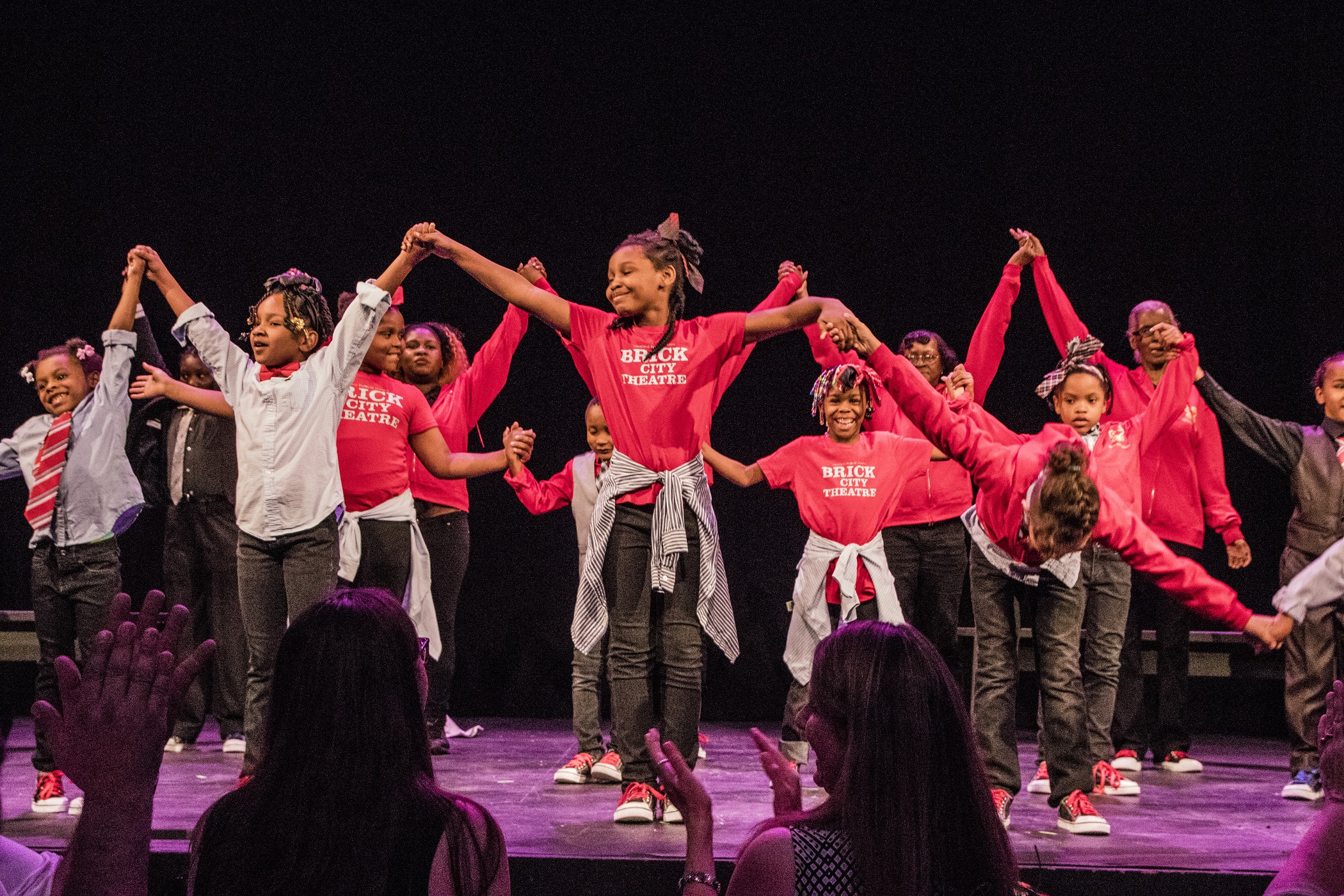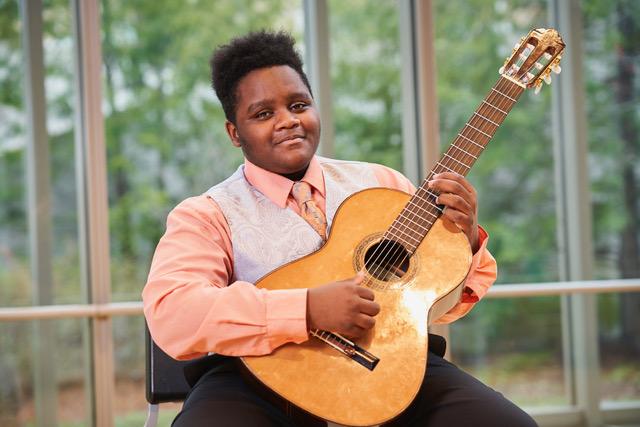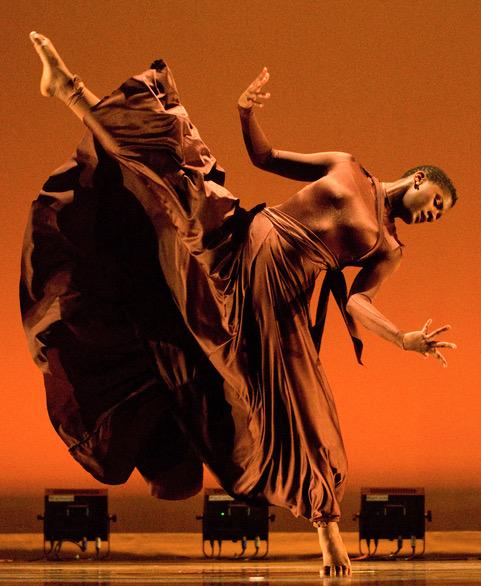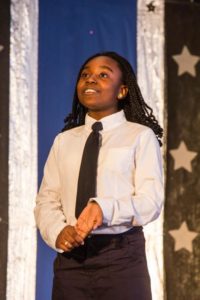
Shaping Young Lives
through the Arts
Shaping Young Lives
through the Arts
The Cleveland Foundation has a bold vision: To make the arts as accessible as sports in every Cleveland neighborhood. For many of the city's underserved young residents, the impact has been profound.
Imagine a place with thousands of young people mastering music, dance, theatre and other forms of artistic expression, practicing year-round, in diverse neighborhoods across the city. This vision is becoming a reality in Cleveland, Ohio, a city investing in rigorous arts mastery programs where the bar is high and the early impact is profound.
In eighth grade, Damian Goggans took his first guitar lesson from the Cleveland Classical Guitar Society at his middle school on Cleveland’s east side. A year and a half later, Damian, now 15, has developed remarkably. He writes his own songs, recently performed at the Cleveland Orchestra’s Severance Hall, and was selected as a Minority Artist Fellow at the Cleveland Institute of Music. “The guitar helps me express myself and figure out how I am feeling when I can’t always say it out loud,” Goggans reflects.
Across town, students are writing and performing at a public housing site as part of Brick City Theatre, a program where Cleveland Public Theatre artists work with young residents in community theater. More than 600 youth at four public housing sites now are engaged.
And at three community centers across Cleveland, students are practicing ballet and contemporary dance with professional dancers from Cuyahoga Community College’s (Tri-C) Creative Arts Dance Academy. Next year, more than 1,000 students will be enrolled in eight neighborhoods, and will perform all over the city. Students here go on to the San Francisco Ballet summer programs, the Alvin Ailey summer camps and prestigious colleges to pursue dance.
These are just a few of the mastery-based arts programs the Cleveland Foundation is investing in to bring arts education to every Cleveland neighborhood. Why?
We asked, “What if every child in Cleveland had access to high-quality arts programs right in their own neighborhood?”
Cleveland is known for a world-famous orchestra, a renowned art museum, and the largest theater district in the nation outside of New York City. At the same time, there are downtown neighborhoods, often within steps of these amenities, which face alarming disparities.
Transforming Lives & Community
When Ronn Richard, our president & CEO, moved to Cleveland 15 years ago, his wife Bess, an artist herself, was volunteering with children at an arts class. She was shocked to learn that most of them had never stepped foot inside the free Cleveland Museum of Art, despite living within walking distance.

Damian Goggans trains with the Cleveland Classical Guitar Society. Photo credit: Roger Mastroianni.
The realization that there were barriers—economic, cultural, and even physical—that kept Clevelanders from enjoying our most valued institutions helped jumpstart the foundation’s Greater University Circle Initiative (GUCI) in 2006. It has since set a national example of inclusive economic growth in the neighborhoods surrounding University Circle, Cleveland’s cultural hub. Partnership between the museums, universities, and hospitals that anchor University Circle, along with philanthropy, nonprofits and residents has been central to success. The GUCI program continues to shape and improve these neighborhoods, most recently through a health partnership that aims to reduce lead poisoning and infant mortality in the area.
In 2016, Richard applied the philosophy behind GUCI – to ensure residents could access and benefit from amenities in and near their neighborhoods – to our investments in the arts and culture sector. He asked, “What if every child in Cleveland had access to high-quality arts programs right in their own neighborhood?” And not simply arts education, but mastery-level, rigorous arts training, the type of in-depth commitment that equips young people with qualities they need in adulthood—confidence, perseverance, creativity, collaboration. This goal has become the north star of our arts funding as embodied in our Arts Mastery Investments program.

Sylvia Settles in a performance in May 2018. Photo credit: Jeff Foreman.
We started by partnering with local arts nonprofits, or neighborhood “anchors” who were already designing and implementing high-quality, mastery-level arts education programs. Our funding has helped scale their services to reach more underserved young people, those who don’t have the same opportunities to pursue rigorous arts instruction that their peers in nearby suburbs do.
Why Arts Mastery?
A big part of mastery-level arts education stems from the quality of the instruction. In these programs, teams of professional teaching artists not only provide technical training, but create an environment where students are pushed to deliver excellence and hold themselves and their peers accountable. The rigor creates a family-like environment that nurtures youth both in and outside the studio or classroom.
“Classical guitar teaches time management, discipline, practice—things that translate to academics and everything else in life,” said Brian Gaudino, director of education at the Cleveland Classical Guitar Society, and Goggans’ instructor.
The same is true no matter the artistic discipline. Take theater, for example. Con’Yai Smith, 13, started lessons at Brick City Theatre when she was eight after her grandmother found a flyer for the free training. “Brick City took me from one place to another. I didn’t know I was good at performing until I tried it. Now I can express myself more. I know myself more.”
Her experience helped Smith when she needed it the most: her mother’s death. In processing the loss, she channeled grief into art. “I was going through a hard time, so I spent hours and hours writing.” She’s since performed her poem, “Cheetah,” inspired by her mother, at events citywide. Says Faye Hargate, Smith’s teacher and manager of the Brick City program, “What a privilege and honor it has been to teach her, to see her grow and to witness her ability to command a room with her electrifying presence and her enormous heart.” Hargate also acknowledges the painful reality of life for many of Cleveland’s youth. “The kids we work with are survivors. What they have overcome has expanded my understanding of what’s possible,” she says.

Con’Yai Smith on stage. Photo credit: Steve Wagner, Cleveland Public Theatre.
Dancer Sylvia Settles has drawn the same strength from her art form. Now 16, she began studying at the Creative Arts Dance Academy three years ago. “Without dance, I don’t know what I’d be doing. It keeps me out of trouble, it keeps my mind off of negative things. I get an amazing feeling of being free. It’s a safe place,” she says.
Settles credits her longtime instructor Terence Greene as a source of inspiration and guidance. “He influences us to not just be good dancers, but to be humble, loving, and to take care of people around us,” she says. The quality of the programs, and the relationships formed, can go far deeper than skill development and personal growth. Last year, Settles counted on Greene and her fellow dancers to help her through the violent death of her older brother, Timothy. When she found out he had been shot, she went to rehearsal. “I just wanted to dance. They helped me get through it. They are my family. We all sat on the floor, just crying, snot-nosed and sweaty. It felt good. They knew how much my brother meant to me. They made it seem like everything would be okay,” she said.
Philanthropic Takeaways
At the Cleveland Foundation, we are guided by several key principles in our funding of arts mastery programs. These efforts:
- Deliver year-round, mastery-level instruction.
- Have capacity to expand for long-term sustainability.
- Serve underserved youth.
- Deliver programs in neighborhoods, sometimes in non-traditional spaces, such as rec centers, libraries, or places of worship.
- Provide stipends to older students to begin teaching their younger counterparts.
The most important tenet we have followed, however, is flexibility based on what we hear from our partners. This has sometimes meant adapting to challenges, including neighborhood safety and transportation, as well as providing supports to ensure the emotional and physical well-being of students who may face an array of personal challenges at home. But parents and their children stay engaged because these programs have the highest standards. The expectations and the quality are the same as in neighborhoods where people are paying thousands of dollars for instruction. And here, they are free.
Over the next year, more than 3,000 young people will have access to rigorous, high-quality arts mastery programming in 18 Cleveland neighborhoods, well on our way to reaching our goal of providing north of 5,000 seats within five years.
In my view, these investments and partnerships represent a big shift in how the foundation has traditionally made grants. Here we are using a truly interdisciplinary approach, combining expertise from the many areas in which we work, including arts and culture, neighborhood revitalization and community development, and education.
The Cleveland Foundation values metrics of successful outcomes, and we expect to have data from our arts mastery program next year. But for me, the greatest way to see how our investments are paying off is through the lives that are being changed. As young guitarist Damian Goggans recalls, “The night of my first lesson, I went home and stayed up all night trying to learn the notes. I just love to play. After that, I realized I could do anything.”
Cleveland Foundation Arts Mastery Investments Partners:
- Cleveland Public Theatre, Brick City (theater)
- Cleveland Print Room, Teen Institute (photography)
- Cuyahoga Community College (Tri-C), Creative Arts (dance)
- Rainey Institute, El Sistema (music/orchestra)
- Cleveland Museum of Art and Cleveland Public Library (curatorial)
- Cleveland Classical Guitar Society (guitar)
- Twelve Literary Arts, One Mic Open (poetry and creative writing)
- Sisterhood (literary arts)
Lillian Kuri is vice president for Strategic Grantmaking, Arts & Urban Design Initiatives at the Cleveland Foundation.
Banner photo credit: Steve Wagner


